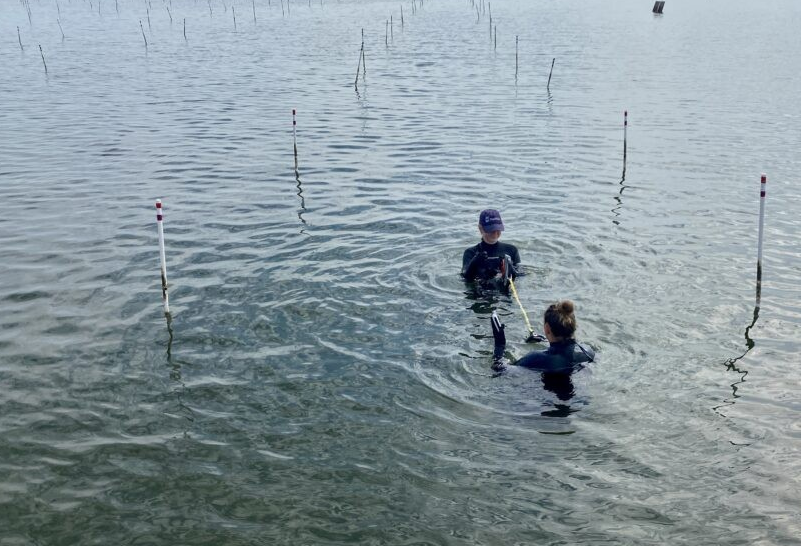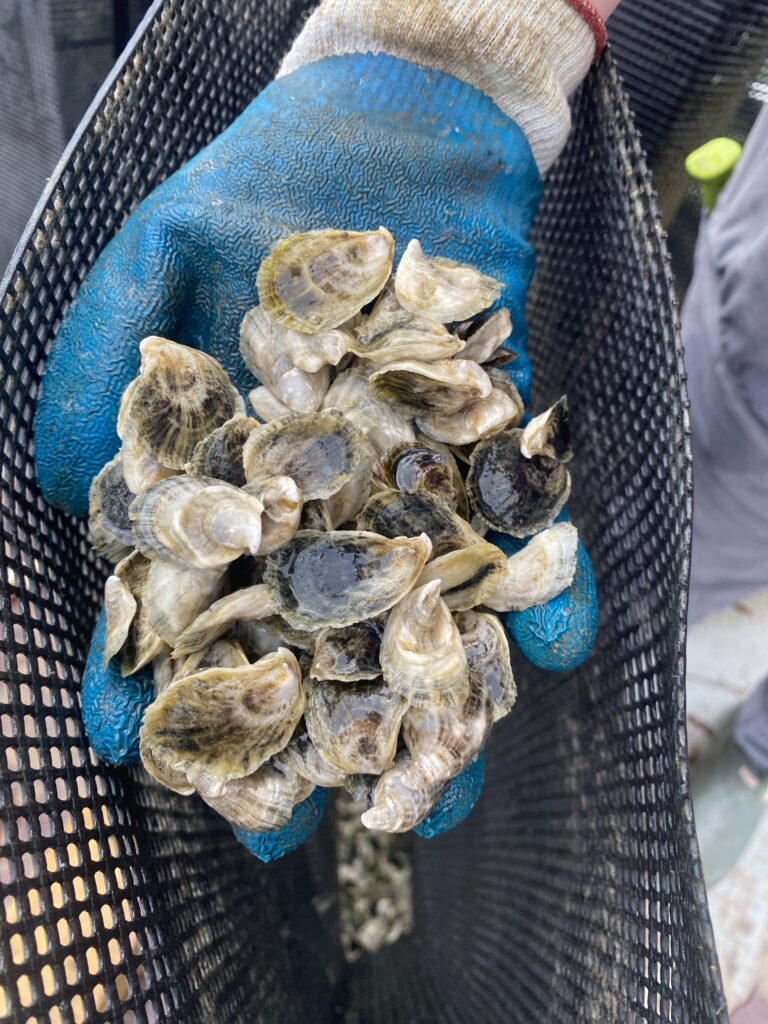Addressing Near Shore Pollution Via in Situ Nutrient Sinks in Alabama

Funded by the Environmental Protection Agency (EPA), this project will evaluate the effectiveness of different oyster set style and size combinations, single seed, spat set shell, single adults, and adult florets, relative to sequestering nitrogen and phosphorus. The single seed (R6) and spat set shell were spawned in August 2024 at the Auburn University Shellfish Lab on Dauphin Island. The single sub-market oysters range from 60 to 65 millimeters in height and are sourced from local farms. The large floret oysters (sub-market) come from ongoing restoration research.

Additionally, the project will evaluate how infrastructure may stabilize restoration sites. The team installed 32 plots in the Mississippi Sound off Coden, Alabama during the Summer of 2025. The next step was to install a hard bottom on which to place the live oysters. Seasoned oyster shells from Alabama’s shell recycling program were placed across the 32 plots to form the hard bottom needed.
Sampling will be completed quarterly for each replicated treatment type. Nutrient content analysis will be done in Dr. Kevin Wang’s lab at the University of Florida. We will evaluate any effect of set style and size on the amount of nitrogen and phosphorus sequestered. Additionally, we will calculate oysters’ dry weight and abundance in combination to determine the restoration status. The goal of this study is to further best management practices for controlling near-shore pollution and advance local oyster restoration methods.

